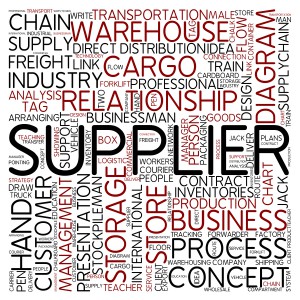
Supply Management: Much More Than Sourcing
Many people equate Spend Management with the process of Strategic Sourcing! Personally, I have always viewed it in a much broader sense – the “total cost” of acquiring and managing raw materials, goods and services for use in manufacturing or service provision. By my way of thinking, price per unit is merely the tip of the iceberg and failure to look closely at other costs and processes can leave a lot of unclaimed savings on the table. Perhaps Supply Management provides a more accurate reflection of my holistic view.

The natural next question is so what is Supply Management? To me, it is the discipline that focuses on the people (internal and external) and processes involved in acquiring and managing the flow of inbound materials from suppliers to producers or providers, up to the point of the actual manufacturing or service provision. In essence, it ensures the right inputs are available at the right time, and the right total cost to profitably meet demand and customer expectations. It includes such things as:
- Collaborating with Suppliers to share demand and production forecasts;
- Eliminating cost inefficiencies between Supplier and Buyer;
- Better internal and external supply chain integration;
- Minimizing raw material inventory, obsolescence, and freight/handling while increasing inventory turns;
- Rethinking buying habits and patterns (frequency, quantity, etc.)
- Considering and managing all types of working capital;
- Improved product availability;
- Managing and improving Supplier performance;
- Selecting flexible suppliers that meet the company’s needs as well as cost constraints; and
- Optimizing Cash to Cash cycle time.
When working with clients, USC Consulting Group helps assess the performance of their Purchasing & Procurement function (perhaps better called Supply Management function) in comparison to those of best in class organizations across multiple scoring dimensions. We also look to identify and close the gaps and disconnects in their processes (Management Operating Systems) that foster waste and limit benefit realization. This might include redefining roles, responsibilities and processes, improving the use of technology or implementing analytical approaches as well as implementing metrics that assess the performance of internal operations and Suppliers with regard to achieving key business objectives and competitive strategy.
Implementing a robust Supply Management strategy supported by robust processes drives both financial and qualitative value, and while the sourcing component may be the most visible piece, capable of yielding strong results on its own, it is just one piece of the Supply Management puzzle.





